
Red Hills, Mother Lode Field Office
|
|
ISSUE 895- March 26, 2020
|
|
|
- Headlines and Highlights
- BLM and DOI Highlights
- Wildlife Question of the Week
- Upcoming Events

Practice social distancing outdoors
Outdoor activities can provide many health benefits when practiced safely. We recommend visiting areas close to home while avoiding very popular or crowded locations where social distancing may be difficult and limiting group activities to members of your household. Do your part when visiting public lands. (BLM CA Webpage)
|
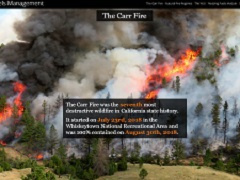
BLM Redding prepares for wildland fire
Wildland fires have always been a natural component of California's landscape. Fire is crucially important for many ecosystem processes and overall forest health. However, as urban development steadily increases in wild areas, multiple fire management approaches must be employed to protect both wildland and communities. (BLM CA webpage)
|
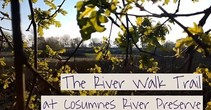
Enjoy a virtual stroll on the River Walk Trail!
Take a virtual tour and walk along the river at the Cosumnes River Preserve. Sharing some beautiful shots from the trail. (BLM CA Facebook)
|
|

BLM temporarily suspend entrance fees
The Bureau of Land Management manages over 245 million acres of public lands nationwide - perfect for getting away! BLM will now temporarily suspend the collection of all entrance fees until further notice. As a result, site-specific day-use fees at BLM recreation sites and areas will be waived for the foreseeable future. Other fees, such as overnight camping, cabin rentals, group day use, and use of special areas, will remain in effect. (BLM CA Facebook)
|
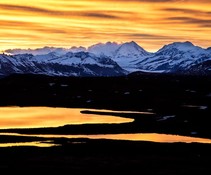
BLM Arm Chair Adventures: Mount Hayes, Alaska
America’s #publiclands offer some of the most spectacular and interesting places you’ll ever see. While everyone is encouraged to stay at home, we’ll be providing #armchairadventures and an opportunity to travel virtually and learn a bit about these amazing places. We invite you to follow along with us over the next few weeks on our journey! (BLM Facebook)
|
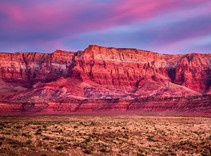
BLM Arm Chair Adventures: Vermilion Cliffs,
Arizona
Today takes us to the aptly named Vermilion Cliffs managed by the Bureau of Land Management - Arizona. It's located north of the Grand Canyon, parallel to the Utah-Arizona border. These foreboding steep walls of rock rise as much as 3,000 feet above their bases. The sandstone and other sedimentary rocks gain their rich red-vermilion colors from iron oxide pigments. Moisture bonds with the iron in a process that is the same as rust forming on a piece of metal. Lighter bands of rock contain less iron while other minerals in smaller quantities produce additional colors such as blue from manganese. The warm colors are almost surreal at sunrise and sunset. (BLM Facebook)
|

Idaho's Morley Nelson Snake River Birds of Prey National Conservation Area
#DYK - Some 800 pairs of hawks, owls, eagles and falcons come each spring to mate and raise their young at Idaho's Morley Nelson Snake River Birds of Prey National Conservation Area. Check out these cool remote learning opportunities from the Bureau of Land Management - Idaho to learn more about this unique and special place from the comfort of your home. (BLM Facebook)
|
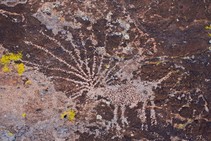
Basin and Range National Monument
Looking to get outside without leaving the house? Take a virtual tour of Basin and Range National Monument cultural sites, such as Mt. Irish, from the comfort of your home! (BLM NV Facebook)
|
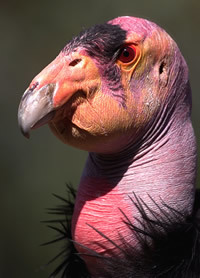
Multiple choice
The California condor (Gymnogyps californianus) is the largest land bird in North America. These majestic creatures historically ranged from California to Florida and Western Canada to Northern Mexico. What is the average wingspan of this majestic bird?
a) 5 ft
b) 12.75 ft
c) 9.5 ft
d) 3.25 ft
Keep scrolling to find the answer.
|

BLM seeks comments on 2020 off-highway vehicle recreation proposals
The Bureau of Land Management is seeking public comments on the California State Parks, Off-Highway Motor Vehicle Recreation Division, off-highway vehicle recreation proposals, which are available for review from March 3 to May 4 (BLM news release)
|
|
Wildlife Question of the Week Answer
The answer is c. The California condor has a wingspan of 9.5 feet and weighs up to 25 pounds. These majestic creatures historically ranged from California to Florida and Western Canada to Northern Mexico. By the mid-20th century, condor populations had dropped dramatically, and by 1967 the California condor was listed as "endangered" by the federal government. In 1982, only 23 condors survived world-wide. By 1987, all remaining wild condors were placed into a captive breeding program. Thus began an intensive recovery program to save the California condor from extinction.
The number one cause of death of California condors is lead poisoning. This occurs by condors feeding on carcasses containing lead bullet fragments. When lead ammunition fractures inside the target animal, the fragments of the bullet can spread throughout the tissue of the animal that has been shot. As scavengers, condors unknowingly eat these small fragments and absorb the lead into their systems. Copper bullets, an effective lead alternative, are growing in popularity with the hunting community and minimize collateral wildlife damage as well as ingestion of lead fragments by hunters.
Related Links: FWS California condor page, NPS lead bullet information
|